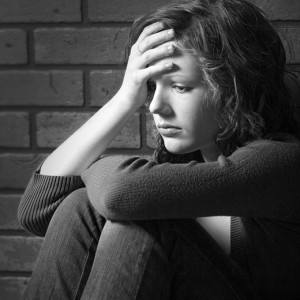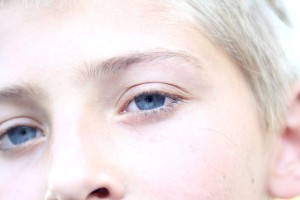- Calls to this hotline are currently being directed to Within Health or Eating Disorder Solutions
- Representatives are standing by 24/7 to help answer your questions
- All calls are confidential and HIPAA compliant
- There is no obligation or cost to call
- Eating Disorder Hope does not receive any commissions or fees dependent upon which provider you select
- Additional treatment providers are located on our directory or samhsa.gov
Abuse, Trauma, and Eating Disorders

According to the National Institute of Mental Health, children who have been abused are more likely to develop posttraumatic stress disorder (PTSD). This stress need not wait until adulthood to manifest itself. Rather, symptoms can occur in children and adolescents. The memories of childhood abuse can also surface in adulthood, triggered by unrelated traumatic events.
How the Symptoms of PTSD Influence Eating Disorders
One of the symptoms of PTSD is gastrointestinal discomfort or distress. It is intriguing to consider the possibility that this very symptom of PTSD might actually influence or support a decision to use an eating disorder or pattern of disordered eating as a coping mechanism.
Take, for example, a child caught in the midst of a marital breakup. The child’s anguish could manifest itself in gastrointestinal distress, making it literally painful to eat. The child might decide that, while she cannot decide whether or not her parents fight, she can decide whether or not to endure any additional pain by eating.
The physical pain of hunger might even be interpreted as better than the unpleasant side effects of eating with an upset stomach.
The Stomach’s Reaction to Emotions and Trauma

He might then determine that the way to settle his stomach, and his other worries, is to eat—and to keep eating as long as his distress continues.
A child who is convinced of her own unworthiness may decide that the severe restriction of all pleasure, including the enjoyment of eating, is a way to buy penance for her imperfection. Digestion becomes linked to self-love and self-acceptance. By denying the body’s basic needs, the soul is punished.
Understanding the Pain of Trauma
Understanding the past is not about measuring the trauma suffered to determine whether it is “weighty” enough to justify a person’s issues with food. Pain is not something to be justified. In order to heal, pain must simply be understood.
An eating disorder or disordered eating pattern may be use to mask the pain and numb the torment. But unrecognized or denied pain is still toxic, harming the fragile sense of self. A dysfunctional relationship with food promises a temporary smoke screen to shield a person from pain. But at the heart of this behavior is obsession and addiction.
The Process of Recovery

This is the first, critical step that begins to free people from the tight grip of an eating disorder, putting them on a path to freedom, health and wholeness.
Excerpts of this blog were taken from Dr. Gregory Jantz’s book Hope Help & Healing for Eating Disorders: A Whole-Person Approach to Treatment of Anorexia, Bulimia, and Disordered Eating.
Contributor: Authored by Dr. Gregory Jantz, Founder of The Center • A Place of HOPE and author of 30 books on behavioral and mental health issues, including depression, anxiety, eating disorders, and others.
The opinions and views of our guest contributors are shared to provide a broad perspective of eating disorders. These are not necessarily the views of Eating Disorder Hope, but an effort to offer discussion of various issues by different concerned individuals.
Last Updated & Reviewed By: Jacquelyn Ekern, MS, LPC on April 5, 2017
Published on EatingDisorderHope.com
